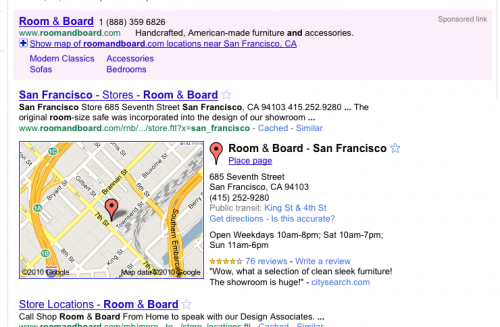AdWords And Google Voice Hook Up To Form “AdWords Call Metrics”
What if AdWords and Google Voice had a love child? That child would probably be named “AdWords Call Metrics,” which is what Google is introducing today. Google is combining the functionality behind Google Voice with AdWords. That equals call tracking for AdWords campaigns. Google’s objective in making call tracking available — offering both local and […]
What if AdWords and Google Voice had a love child? That child would probably be named “AdWords Call Metrics,” which is what Google is introducing today. Google is combining the functionality behind Google Voice with AdWords. That equals call tracking for AdWords campaigns.
Google’s objective in making call tracking available — offering both local and toll-free (VoIP) numbers — is to show advertisers that AdWords is driving more value than they realize. In other words, Google is seeking to expose the additional ROI that AdWords drives in offline actions and activity. (That’s where most of the transactions are in fact.)
AdWords Call Metrics is available for both PC and mobile campaigns on “high end” devices (smartphones with full browsers). There’s no associated fee or change in the pricing of campaigns that choose to utilize call tracking.
On mobile devices marketers have the option of buying calls exclusively (“Click to Call”). However that option doesn’t yet exist on the PC. While Google wouldn’t confirm this, it’s reasonable to assume that over time Google will seek to align its PC and mobile offerings, making what amounts to pay-per-call available to PC-based campaigns.
In fact, in its blog post, Google says, “You’ll still only pay for clicks on your ad, although this may change as the product continues to evolve.” Pretty strong evidence that pay-per-call is coming to PC AdWords campaigns.
Similar to phone extensions, here’s what the ads look like: 1) top AdWords position, 2) right column 3) mobile:
The top ad I pulled from the web, the others are screenshots provided by Google.
To concretely illustrate the value of Call Metrics Google talked to me about a campaign involving furniture retailer Room and Board (which is how I got the screenshot above). About half the people who called the 800 number in the Room and Board ad bought something online. However the other half who called the number ultimately bought something in a local store.
That latter 50 percent was almost entirely invisible in determining ROI prior to AdWords Call Metrics. The company’s SEM firm figured out the in-store conversion rates by comparing the Google call data with in-store sales records and discovered “the other half.”
AdWords Call Metrics routes calls from the VoIP tracking number to a designated business number. Google captures time of the call, call duration and (soon) area code. However marketers will only get reports on area codes in the aggregate; they won’t get individual call records.
Some firms, such as Marchex and Telmetrics, do provide detailed records of individual calls, including call recording and transcription. I asked Google about call recording and got a relatively standard no-comment-on-the-product-roadmap answer. I suspect that eventually Google will record and transcribe calls. There’s an enormous amount of valuable information in these calls for marketing and customer service purposes.
In its post Google even offers a little “best practices” advice:
Once you know where your calls are coming from, you can refine your marketing strategy to make sure you’re getting the most out of your ads. For example, you could test different ad text variations to see which results in the most calls or reallocate budget to campaigns that truly bring you the highest ROI.
This thinking behind Call Metrics isn’t new and a number of companies have similar solutions in the market (and have for some time). As mentioned Telmetrics and Marchex, but also Kenshoo with its novel “Call Conversion Optimization” initiative. Many marketers in fact have known for a long time that paid-search and other forms of online marketing drive offline transactions. But it has been very challenging to capture and measure that offline activity — other than with coupons.
Google was doing call tracking for its short-lived Local Listing Ads. Now any paid-search campaign will potentially be able to adopt the feature, which marketers should definitely test out and utilize.
[youtube]https://www.youtube.com/watch?v=QIJ36uUxJBw&feature=player_embedded[/youtube]
Contributing authors are invited to create content for Search Engine Land and are chosen for their expertise and contribution to the search community. Our contributors work under the oversight of the editorial staff and contributions are checked for quality and relevance to our readers. The opinions they express are their own.
Related stories
New on Search Engine Land



